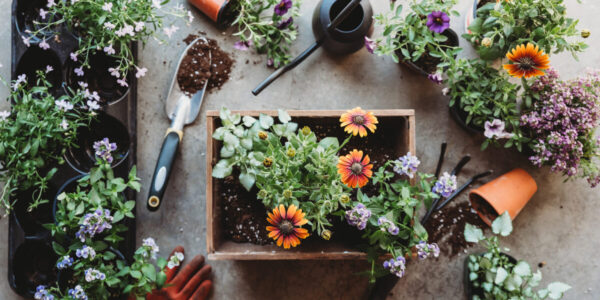
Beauty that endures
Northwest Coast native peoples are producing astonishing art
But it isn’t. This is a strangely friendly face. And with itssteadfast gaze, the mask has the power to pull an onlooker backthrough the centuries, into smoke-filled longhouses where firelightthrows the shadows of dancers onto walls, back further to the daywhen the inquisitive Raven cracked open a clam shell and, accordingto Haida tribal legend, the human race crawled out into thisworld.
That’s what the art of Northwest Coast native peoples can do:transport you to a richer, wilder world. No wonder more and morepeople are collecting this art―and that the Northwest’snative artists are flourishing as they haven’t for more than acentury. Says Seattle-based Tsimshian artist David A. Boxley,”There’s an incredible revival going on. We’re seeing wonderfulwork being done, probably much like it was up to a century and ahalf ago. These are exciting times.”
Building your collection
Museums and galleries specializing in Northwest Coast artfeature many of the region’s major tribes: Coast Salish, Haida,Heiltsuk (Bella Bella), Kwakwaka’wakw (formerly Kwakiutl),Nuu-Chah-Nulth, Nuxalk (Bella Coola), Tlingit, and Tsimshian. Worksof art range from masks to carved wooden bowls to bentwood boxes,and from ornate halibut hooks to woven baskets, both antique andmodern.
Collecting authentic Northwest Coast native art―evenbuying a single piece―is not an inexpensive proposition. Adrum may cost several hundred dollars. Masks can easily exceed athousand or more. Still, one good piece can be the focal point of aroom and give you endless hours of enjoyment.
Before making a purchase, you should educate your eye. FromPortland to Vancouver, B.C., many museums have respectedcollections of native art. Read, too: the University of WashingtonPress has 40 titles in print and is considered to offer the bestbooks on the subject. Northwest Coast Indian Art: An Analysis of Form, by BillHolm (University of Washington Press, Seattle, 1965; $18), is aclassic. (For a complete catalog visit www.washington.edu/uwpressor call 800/441-4115.)
Visit galleries, take your time browsing, and don’t feel anypressure to buy. “A gallery is a community resource,” points outBecky Blanchard, codirector of Seattle’s Stonington Gallery. “It’spart of a city’s cultural life. People should be able to go andspend time, research artists they are interested in, and experiencethe work in a relaxed, supportive environment.”
Find something that you like, then search out other pieces bythe same artist. As with any serious purchase, Northwest Coastnative art should be considered as carefully as a new stock thatyou might add to your portfolio. And the art might do even betterat increasing in value.
Treasures to hunt for
Masks. Likely the best-known Northwest Coast native artform, carved masks depict family crests or important figures fromnature and myth, such as Bear, Raven, Eagle, or Orca. Favoredmaterials are cedar or alder. A good mask will be perfectlysymmetrical, with subtle knife marks and a strong sense ofpersonality. A top-quality mask by an emerging artist can cost $800to more than $1,500, and a mask by a well-known artist can easilyrun into the thousands.
Halibut hooks. Made for fishing, most are ornately carvedfrom cedar or yew. The hook often features a figure that should beso beautiful that it’s irresistible to the halibut. Search for ahook with a genuine bone barb fitted into the wood. A good one byan emerging artist may sell for $1,000 or so. The work of a famousartist may command several thousand.
Bentwood boxes and chests. Used for storage and cooking,boxes are made of scored cedar planks, traditionally steamed in apit of hot rocks and cedar and sword fern, then bent into shape anddecorated with carvings or paintings. A quality box should havesmooth corners, with reliefs or shallow carvings. You can buy asmall, top-quality box for $400 or so; larger boxes can costthousands.
Developing an expert eye
Museums
Burke Museum of Natural History and Culture. 17th Ave. NEand N.E. 45th St., Seattle; www.burkemuseum.org or (206)543-5590.
Museum of Anthropology at the University of BritishColumbia. 6393 N.W. Marine Dr., Vancouver, B.C.; www.moa.ubc.caor (604) 822-3825.
Portland Art Museum. 1219 S.W. Park Ave., Portland; (503)226-2811.
Royal British Columbia Museum. 675 Belleville St., Victoria,B.C.; www.royalbcmuseum.bc.caor (888) 447-7977.
Seattle Art Museum. 100 University St., Seattle; www.seattleartmuseum.orgor (206) 654-3255.
Galleries
Douglas Reynolds Gallery. 2335 Granville St., Vancouver,B.C.; www.douglasreynoldsgallery.comor (604) 731-9292.
Inuit Gallery of Vancouver. 206 Cambie St., Vancouver, B.C.;www.inuit.com or(604) 688-7323.
The Legacy Ltd. 1003 First Ave., Seattle; www.thelegacyltd.com or(206) 624-6350.
Quintana Galleries. 501 S.W. Broadway, Portland; www.quintanagalleries.comor (800) 321-1729.
Spirit Wrestler Gallery. 8 Water St., Vancouver, B.C.; www.spiritwrestler.com or(604) 669-8813.
Stonington Gallery. 119 S. Jackson St., Seattle; www.stoningtongallery.comor (866) 405-4485.
